
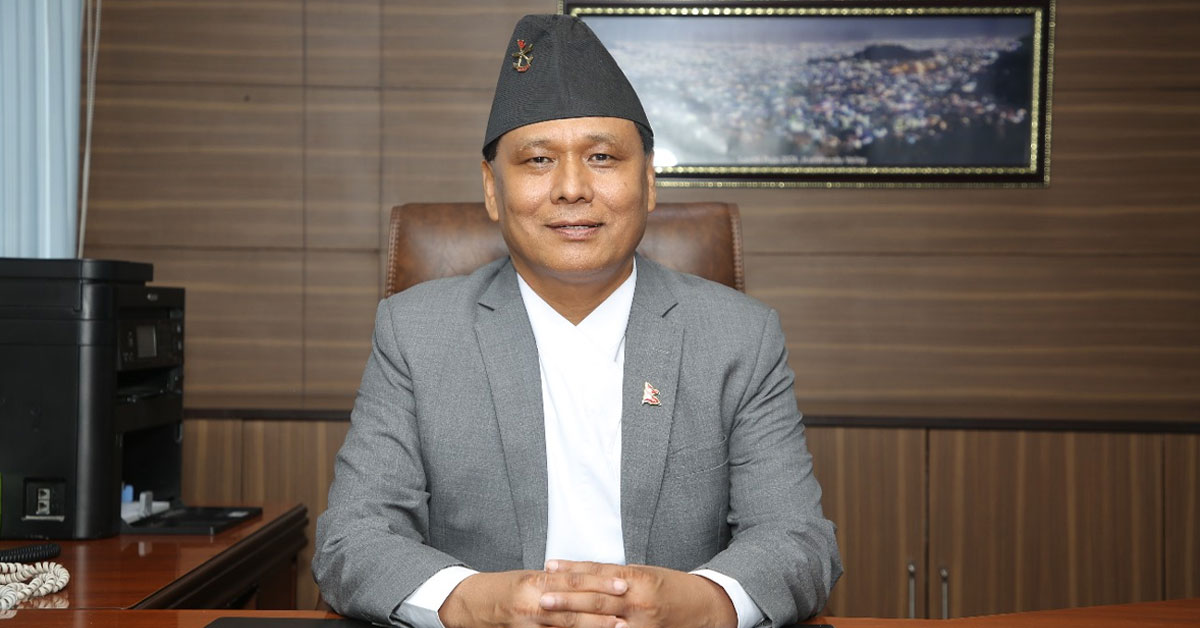
KATHMANDU: The sudden decision to remove Kulman Ghising, the Executive Director of the Nepal Electricity Authority (NEA), has placed the K.P. Sharma Oli-led government in an uncomfortable spotlight. At a time when public discontent with the government and the system is simmering on the streets, this controversial move has added fuel to the fire. The backlash was immediate and widespread. From the streets to social media, voices of protest erupted. The decision also coincides with a broader wave of dissatisfaction with the government. Observers suggest that the timing could not have been worse, as public resentment over systemic inefficiencies and political favoritism reaches a boiling point. Analysts believe the decision to remove Ghising could backfire to government spectacularly.
The government’s actions may inadvertently amplify the very frustrations they seek to suppress, emboldening critics of the system, including monarchist voices like former king Gyanendra Shah. Shah, who has positioned himself as a critic of the current political order, may capitalize on the moment to galvanize support. For the ruling coalition, the stakes are high. As parliament heats up and the streets grow louder, the government must grapple with the fallout of its decision. The removal of Kulman Ghising has become more than just a personnel change; it is now a flashpoint in Nepal’s political discourse, a test of the government’s ability to navigate its tenuous relationship with the people it governs.
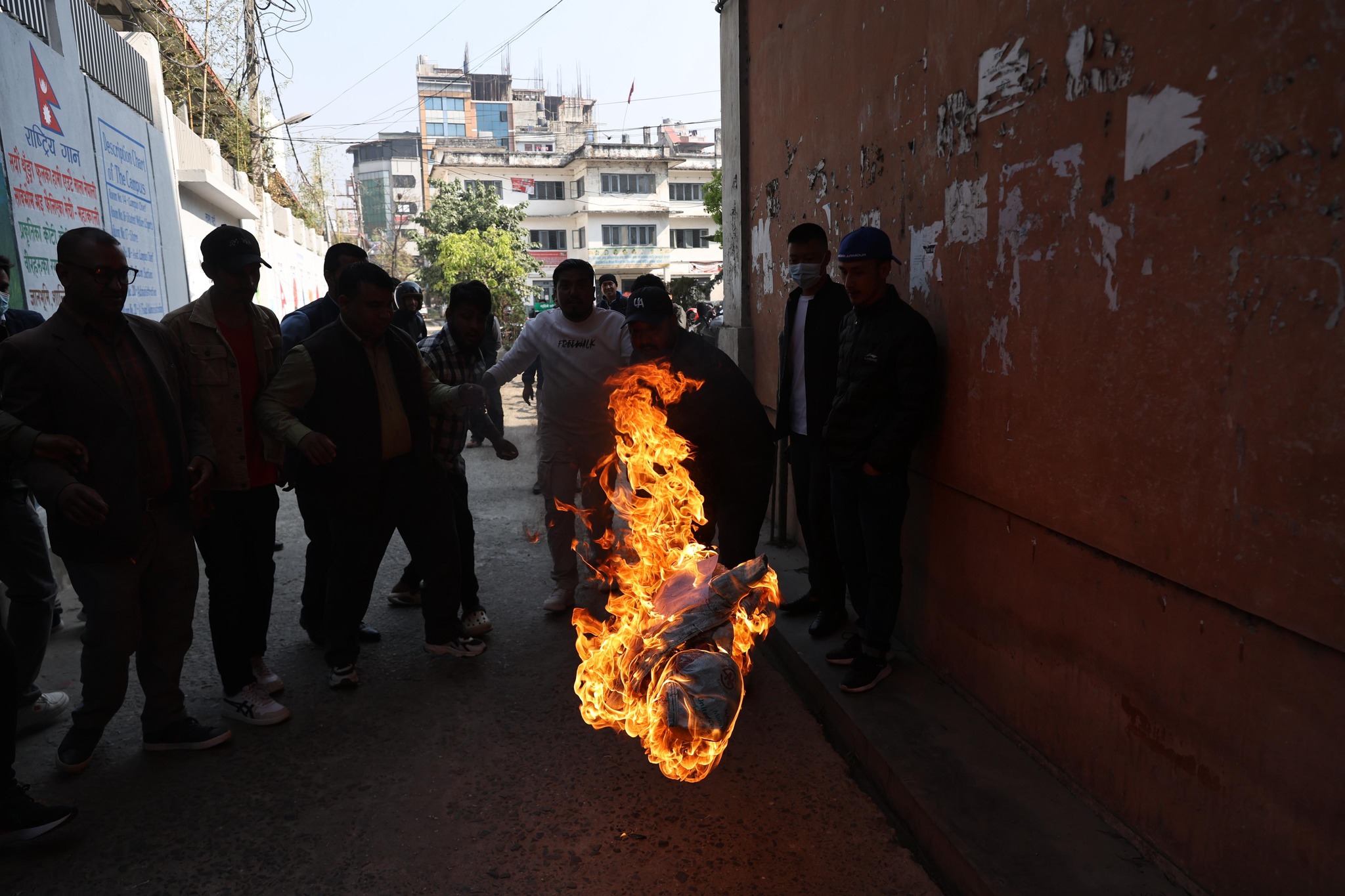
In the coming days, the controversy surrounding Kul Man Ghising and Hitendra Dev Shakya may dominate not just the chambers of the Supreme Court, but also the streets, social media, parliament, news outlets, and political agendas. What began as a dispute over leadership at the Nepal Electricity Authority (NEA) has escalated into a broader public discourse, with tensions flaring across multiple arenas.
The government’s recent decision to reappoint Shakya as Executive Director—after he was previously dismissed and replaced by Ghising—has reignited a complex political, social and legal power struggle. Shakya, who had earlier sought justice in the Supreme Court following his removal, has now returned to the very position he once lost. Meanwhile, Ghising, ousted by the government in this latest reshuffle, is reportedly preparing to challenge his dismissal in the Supreme Court. This unfolding drama reflects not just the leadership tussle at NEA but also deeper questions of governance, accountability, and public trust of the government. This saga is poised to ripple far beyond the walls of NEA, capturing the attention of an engaged and divided nation. Here’s what you need to know about this issue:
What is the dispute between the government and Kulman Ghising?
The dispute between the government and Kulman Ghising, the removed Managing Director of NEA, has escalated into a prolonged state of conflict with public accusations. The government, particularly Energy Minister Dipak Khadka and Prime Minister KP Sharma Oli, has been attempting to remove Ghising from his position for many months while publicly criticizing his role. The conflict stems from Ghising’s perceived insubordination, especially in handling energy issues and his defiance of the Ministry of Energy’s directives. His strained relationship with the government, particularly over tariff issues and his unilateral decisions regarding power supply to industries, has led to this growing standoff.
The primary points of disagreement between Kulman Ghising and the government include the handling of tariffs, billing practices, and Ghising’s decision to disconnect power to industries with unpaid dues. The government has criticized Ghising for his unilateral approach to signing agreements, particularly regarding electricity import tariffs with India, without prior approval from the relevant ministries. Additionally, Ghising’s refusal to comply with certain directives, such as the one requesting a performance evaluation and the implementation of the Lal Commission’s report, has further strained relations.
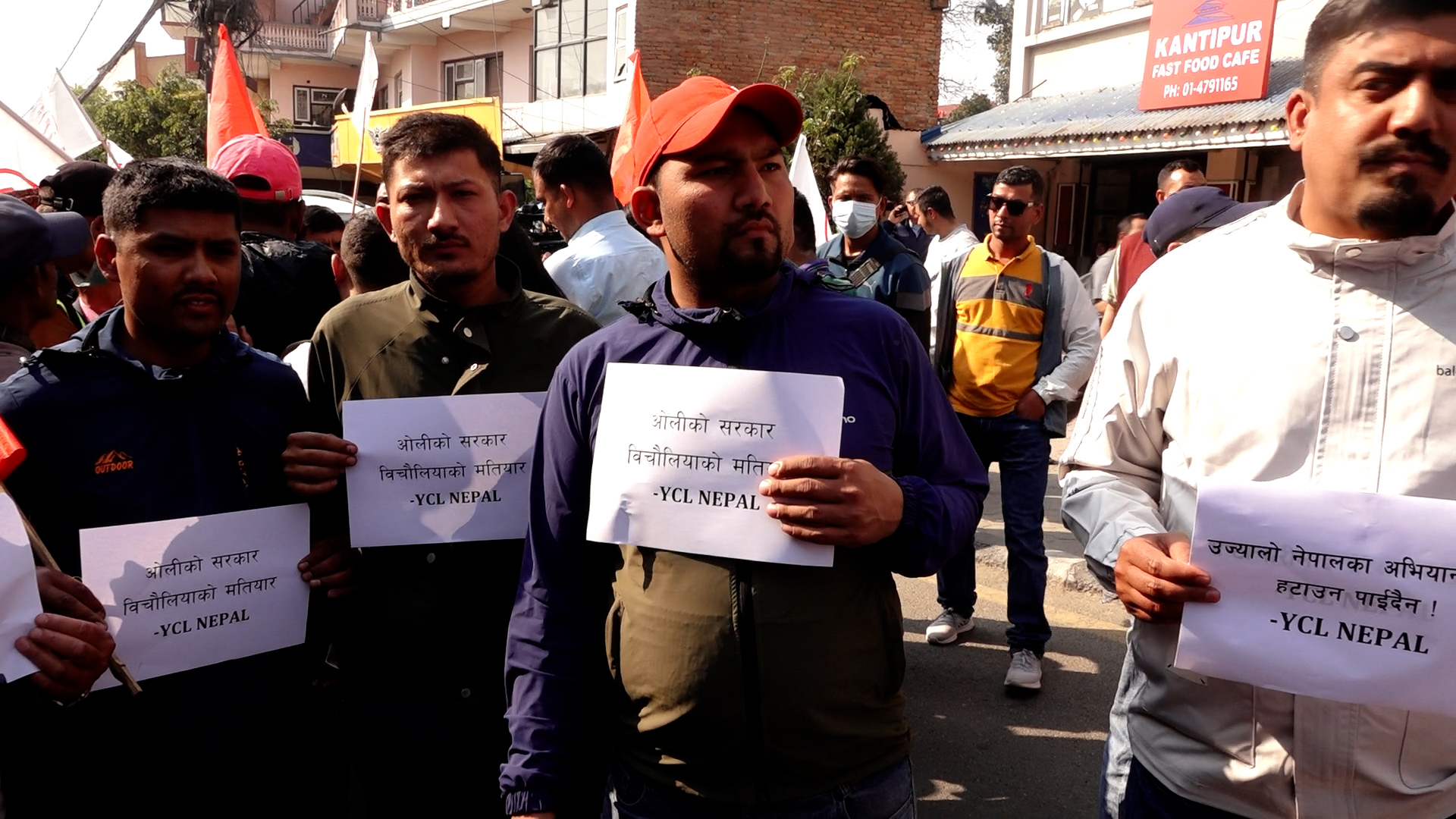
Nepal’s largest industrialists have also expressed frustration with NEA’s opaque billing practices. Despite these issues, the dispute centers around the non-payment of electricity tariffs by industries that used specialized feeders and trunk lines for electricity supply. Last month, the NEA cut power to six industries for failing to pay their dues. Despite orders from the Electricity Regulatory Commission and verbal instructions from Prime Minister Oli, Ghising initially refused to restore power, exacerbating tensions between the Prime Minister and the NEA chief.
Why was Kulman Ghising dismissed from his position as the Executive Director of NEA?
Kulman Ghising was dismissed by the government after a prolonged period of tension between him and the government, particularly with the Ministry of Energy. He had been repeatedly asked to clarify his position, and his performance was questioned. Despite his defense, the Cabinet decided to remove him and appoint Hitendra Dev Shakya as the new NEA Executive Director.
What is the government’s clarification on Kulman Ghising’s removal from the NEA?
The government has clarified the decision to remove Kulman Ghising as the Executive Director of the Nepal Electricity Authority (NEA). The Ministry of Energy, Water Resources, and Irrigation stated that Ghising was dismissed due to unauthorized decisions, factionalism, and defiance of directives. According to the ministry, administrative, legal, policy violations, and performance-related issues also contributed to his removal. A three-page letter was sent to Ghising outlining the reasons for his dismissal, stating that his explanations were unsatisfactory and that he failed to fulfill his responsibilities. The letter cited multiple reasons for his removal, including making public statements against the federal parliament and the government, failing to recover outstanding dues from dedicated feeder and trunk line customers, and leaking confidential documents to the media. Government claimed following reasons for Ghising’s Dismissal:
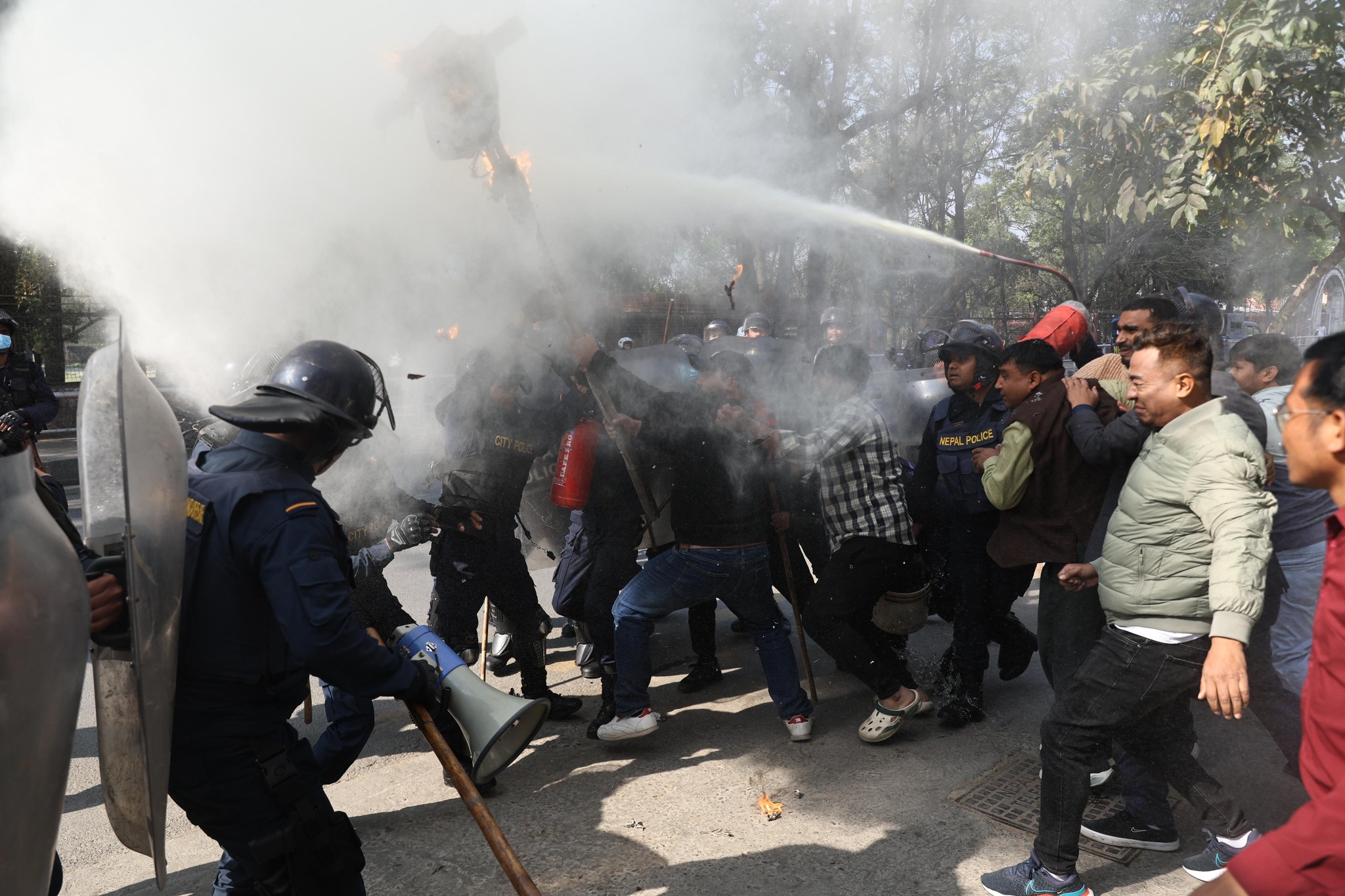
1. Failure to Submit Performance Evaluation Report on Time
As per Clause 9.5 of the performance agreement between the Ministry of Energy and Kulman Ghising, the performance evaluation report for the fiscal year 2080/81 (2023/24) was due by Bhadra 2081 (September 2024). However, Ghising failed to submit the report within the stipulated time, making the evaluation process invalid and violating the agreement.
2. Unauthorized Signing of Nepal-India Power Exchange Agreement
Ghising attended the 15th and 16th Indo-Nepal Power Exchange Committee (PEC) meetings on March 11, 2024, and February 12, 2025, as the head of Nepal’s delegation. However, he signed agreements with the Indian side without prior approval from the Nepal government or the NEA board of directors, making his decision unauthorized.
3. Defying Government Directives on Power Purchase Agreements
On Shrawan 5, 2077 (July 2020), the Cabinet had mandated that all power purchase and sales agreements with India and Bangladesh must have prior government approval. Ghising proceeded with negotiations without seeking approval from the NEA board, violating the NEA Act of 2041 (1984).
4. Unauthorized Decisions in the Absence of the Energy Minister and Secretary
On February 12, 2025, while Energy Minister Deepak Khadka and Secretary Suresh Acharya were on an official visit to India, Ghising claimed to have reached an understanding on new electricity tariffs and procurement. However, the ministry clarified that it had not authorized him to make such decisions.
5. Failure to Recover Outstanding Dues from Dedicated Feeder and Trunk Line Customers
On Kartik 25, 2081 (November 2024), the Cabinet directed the recovery of outstanding dues from customers using dedicated feeder and trunk line electricity within 15 days. Despite official correspondence from the ministry, Ghising failed to implement the directive.
6. Unauthorized Foreign Travel and Leave
As per Regulations 18 and 32 of the Nepal Electricity Authority Regulations 2061 (2004), the Executive Director must obtain board approval for foreign travel. Ghising repeatedly traveled abroad without such approval.
7. Non-Implementation of Board Decisions
The NEA board had made several critical decisions aimed at institutional reform. However, Ghising delayed or failed to implement them, obstructing the progress of key initiatives.
8. Premature Public Disclosure of His Defense
On Falgun 21, 2081 (March 2025), the Cabinet directed Ghising to submit an official response regarding allegations against him. Instead of following due process, he publicized his defense through the media before submitting it to the Cabinet, which was deemed an abuse of his position.
9. Encouraging Factionalism Within the NEA
Ghising was accused of fostering internal divisions among NEA employees, leading to a decline in overall performance and negatively impacting institutional operations.
10. Public Statements Against the Federal Parliament and Government
As the head of a government institution, Ghising made repeated statements against the federal parliament and Nepal’s government, undermining institutional integrity and the dignity of his office.
Why is the Removal of Kulman Ghising Causing Controversy?
The government’s decision to remove Kulman Ghising as Managing Director of the Nepal Electricity Authority (NEA) has sparked a firestorm of criticism from political leaders, opposition parties, and the general public. Ghising, who was instrumental in eliminating prolonged power outages and improving Nepal’s electricity distribution, has gained widespread public support.
Politicians from across the spectrum, including leaders from the ruling Nepali Congress (NC), have expressed outrage at the decision. Former Prime Minister and Main opposition party leader Pushpa Kamal Dahal ‘Prachanda’ condemned the move, describing it as a mistake given Ghising’s past contributions, especially in reducing load shedding during his tenure.
The NC’s spokesperson, Dr. Prakash Sharan Mahat, stated that the decision was made without sufficient internal discussion within the party, and NC General Secretaries like Gagan Thapa and Bishwa Prakash Sharma criticized it as a wrong move. Nepali Congress leader Dr. Shekhar Koirala harshly critized the government’s move, callit it another example of misgovernance.
Other political figures, including Rajendra Lingden, the chairman of the Rastriya Prajatantra Party (RPP), also expressed disapproval, calling the decision regressive and arbitrary. The backlash is even stronger because Ghising was nearing the completion of his term, which would have ended in just a few months. Kulman Ghising himself has vowed to challenge the government’s decision in court, claiming the dismissal is unlawful.
Additionally, the decision has sparked protests on the streets, with various groups calling for a reversal of the move. Lawmakers from the Rastriya Swatantra Party (RSP) and public figures like singer Astha Raut have expressed disbelief and frustration, pointing out that this decision could escalate public discontent further.

The opposition claims that Ghising’s removal might be politically motivated rather than performance-based. Critics argue that his successful tenure at the NEA made him a popular figure, and the government’s action risks losing public trust. The controversy continues to fuel debates within the government, political circles, and the media, with no clear resolution in sight as of now.
Who is the Newly Appointed NEA Managing Director, Hitendra Dev Shakya?
Hitendra Dev Shakya, recently appointed as the Executive Director (Managing Director) of the Nepal Electricity Authority (NEA), is a veteran in Nepal’s energy sector with a career spanning decades. Beginning his journey at NEA in 2045 BS, Shakya has accumulated a wealth of experience in hydropower development, engineering services, and sustainable energy solutions. His extensive expertise and dedication have made him a pivotal figure in the advancement of Nepal’s energy infrastructure.
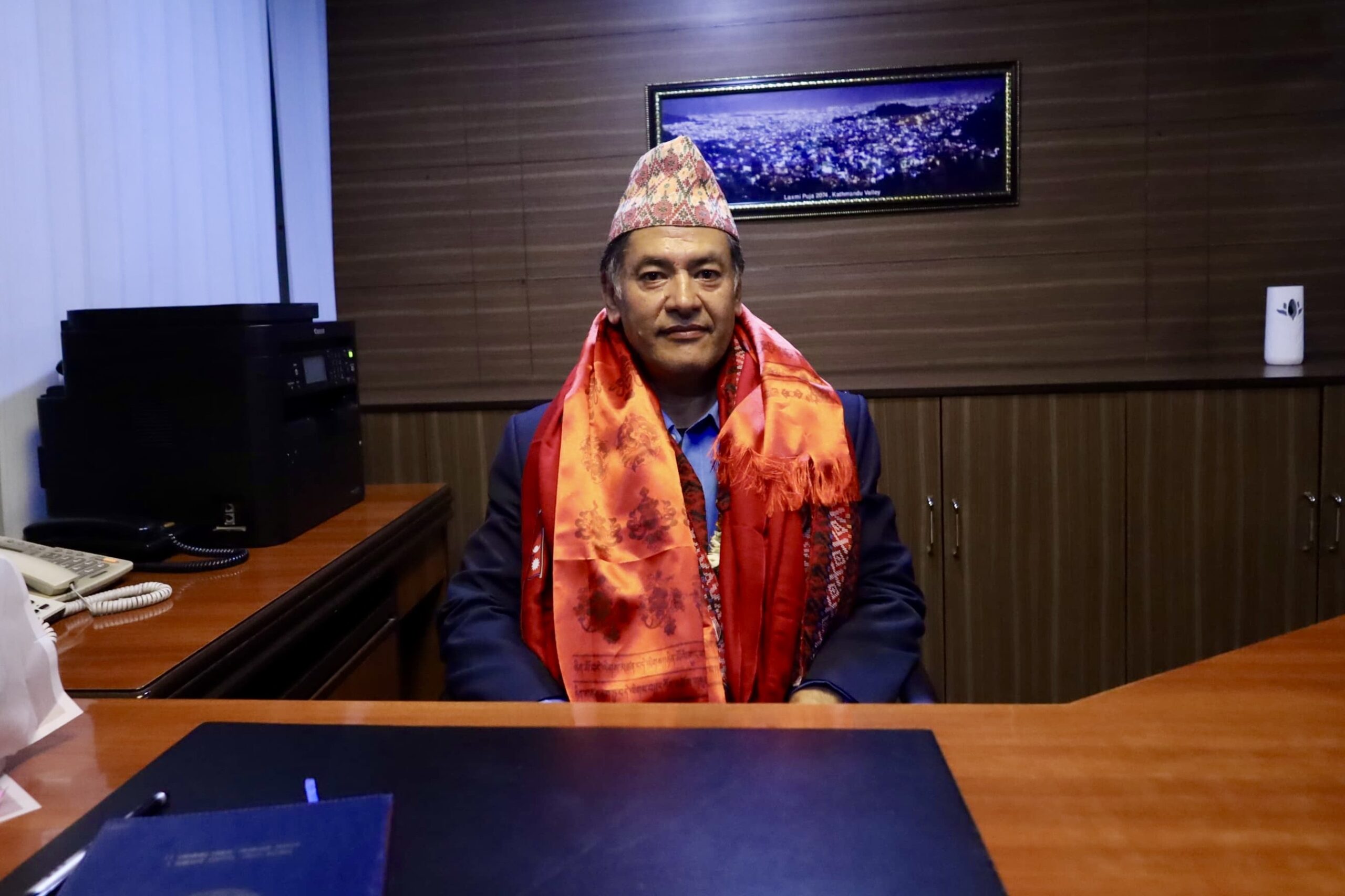
Previously, Shakya served as the Managing Director of NEA but was unable to complete his full term after being replaced by Kulman Ghising. Despite this setback, Shakya remained committed to contributing to the sector. Over the years, he has held several significant positions, including Director of the System Planning Department at NEA and Power Sector Specialist at the Millennium Challenge Nepal Office. He also worked as an Expert on Mini Grids at the Alternative Energy Promotion Centre (AEPC), highlighting his versatility and dedication to promoting renewable energy in Nepal.
Shakya’s leadership was instrumental in the establishment of the NEA Engineering Company in 2017. This consulting firm has been at the forefront of providing engineering design and services for Nepal’s electricity generation, transmission, and distribution sectors. The company has pioneered efforts in introducing electric vehicles in Nepal, undertaking large-scale hydropower projects, and developing essential transmission line infrastructure. Additionally, it has played a crucial role in conducting Environmental Impact Assessments for various hydropower projects, contributing to the sustainable development of the country.
Shakya is a firm believer in capacity building and knowledge sharing among Nepalese experts. He advocates leveraging the skills and expertise of the Nepali diaspora to drive the nation’s development goals. His unwavering commitment to Nepal’s engineering and energy sectors, particularly hydropower, has positioned him as a leading figure in the pursuit of sustainable energy solutions.
What does NEA newly appointed managing director Hitendradev Shakya say?
The newly appointed Executive Director of the Nepal Electricity Authority (NEA), Hitendra Dev Shakya, officially assumed office on Tuesday evening. His arrival was warmly celebrated by NEA employees, who greeted him with garlands and flowers as a gesture of respect and welcome. Shakya, the newly appointed Executive Director of the Nepal Electricity Authority, has said that the authority is facing a critical situation, which he has taken as both a challenge and an opportunity. Speaking after assuming office on Tuesday, Shakya said, “From the outside, everything seems to be fine. However, the authority is in a critical situation. Financially, we are in trouble.”
He further explained the challenges the authority is grappling with, particularly in carrying out new construction projects. “The government has set a target of generating 28,000 megawatts of electricity. The authority and the government face a huge financial challenge to fulfill that responsibility,” Shakya noted. Shakya emphasized his commitment to addressing these challenges, viewing his reappointment as a significant responsibility.
What happened when Hitendradev Shakya filed a petition in the Supreme Court regarding the previous appointment of Kulman Ghising?
In August 2021, the then-government transferred Hitendradev Shakya from his position as Managing Director of the Nepal Electricity Authority (NEA) and appointed Kulman Ghising as his replacement. In response, Shakya filed a writ petition at the Supreme Court, challenging Ghising’s reappointment and seeking reinstatement to his former role.
Despite his efforts, the Supreme Court repeatedly postponed hearings on his petition. Over the past four years, the case has been deferred 31 times, even after 13 hearing were scheduled to address it. The most recent hearing, set for Monday in the bench of Justices Kumar Regmi and Tek Prasad Dhungana, was also did not hear the case to show the time constraints.
Shakya, who was appointed as NEA’s Managing Director on February 8, 2021, by the KP Sharma Oli-led government, was removed just six months later after the Sher Bahadur Deuba-led government came into power. He was transferred to the Power Commission, and Kulman Ghising was reinstated as NEA’s Managing Director.
Shakya argued that his removal was unjust, particularly as he was senior to Ghising by six years. He noted that he had previously worked under Ghising’s leadership during the latter’s first tenure but considered it unfair to be replaced while Ghising was reappointed for a second term.
Although Shakya’s term was initially set to end on February 8, 2025, he was unable to complete his tenure due to his dismissal. His petition was heard by several justices, including former Chief Justice Cholendra Shumsher Rana, but the Supreme Court never issued a final verdict.
Now, with just five days left until his retirement, Shakya will leave office without a resolution to his case, marking the end of his tenure without achieving the justice he sought.
What actions did Prime Minister Oli take regarding the dispute, and how did Dahal respond?
In August 2024, Prime Minister Oli addressed the issue in Parliament, stating that the dues for power supplied to industries through specialized feeders and trunk lines would be recovered. Dahal, in response, challenged Oli’s approach and defended the earlier decisions made during his own tenure as Prime Minister, accusing Oli of undermining NEA’s authority and not allowing it to function properly.
What was Kulman Ghising’s response to his dismissal?
Ghising expressed that he had not received a formal letter of dismissal but would challenge the decision in court if the reports were true. He mentioned that he had submitted clarifications multiple times and would hold a press conference to further explain his position.
What were the reasons cited for Kulman Ghising’s dismissal?
The government had raised concerns about Ghising’s performance, including his failure to submit reports on time and his unauthorized signing of a bilateral energy trade agreement with India, which was said to increase the per unit price for Nepali consumers. Additionally, there were ongoing disputes over unpaid electricity dues from industrial firms.
How did the government justify Ghising’s dismissal?
A Congress minister in Prime Minister KP Sharma Oli’s Cabinet confirmed that the government had the authority to remove any official it had appointed. This justification followed repeated clarifications from Ghising and increasing tensions between the NEA and the government.
Why are there protests against Kulman Ghising’s dismissal?
Protests are taking place because many believe the government’s decision to dismiss Kulman Ghising, the Managing Director of the Nepal Electricity Authority (NEA), undermines his significant contributions. Ghising is credited with reducing load shedding and improving electricity distribution in Nepal, and critics argue that his removal could reverse these gains.
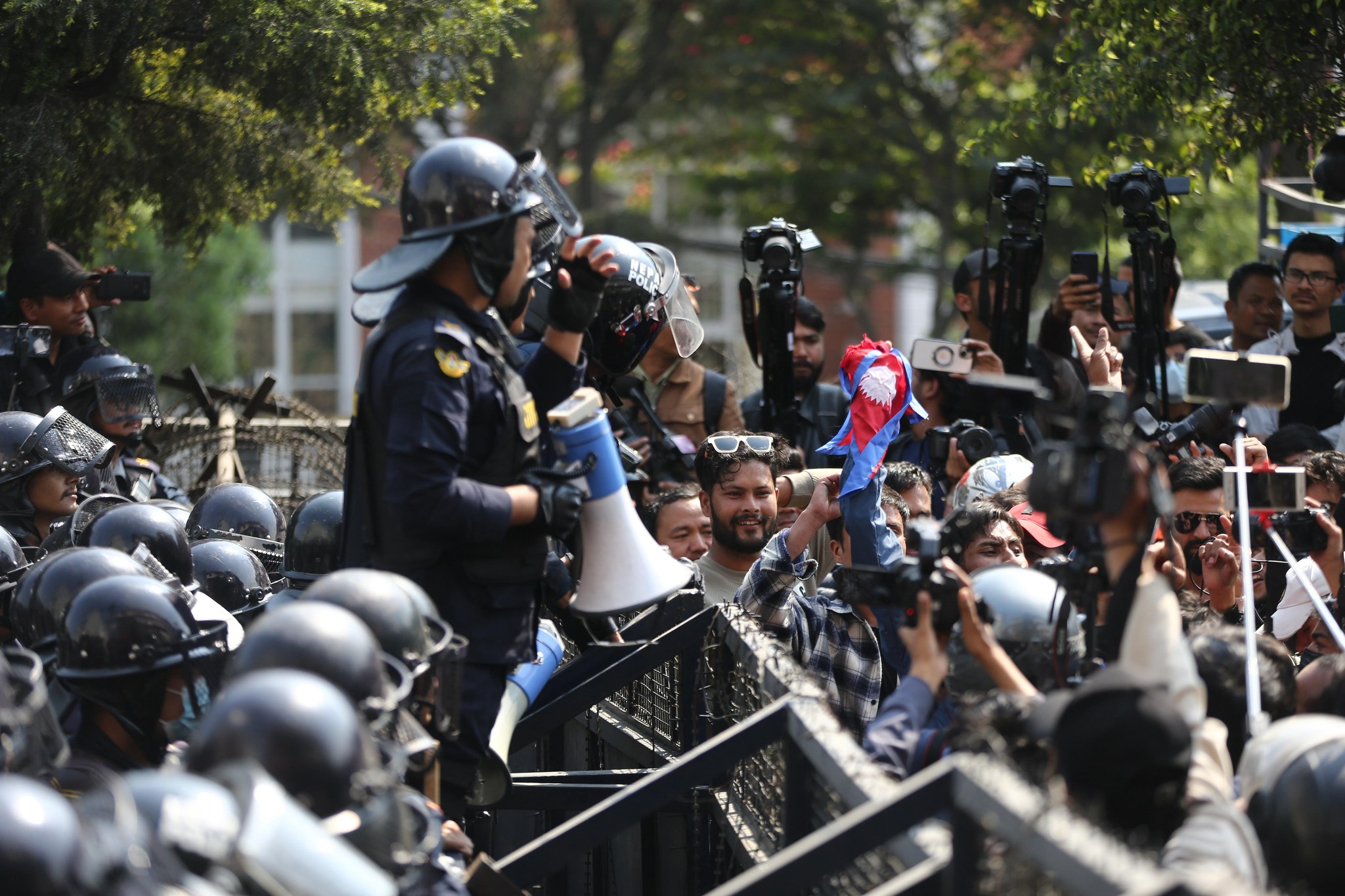
What actions have the protesters taken in response to Ghising’s dismissal?
On Tuesday, ANNFSU activists led protests in Kathmandu, burning an effigy of Energy Minister Deepak Khadka. The protesters are demanding a reversal of Ghising’s dismissal, accusing the government of unjustly removing a key figure in Nepal’s power sector.
Was there any political opposition to Ghising’s dismissal?
Yes, there was significant opposition from political leaders, including from the Maoist Centre and the Nepali Congress opposition camp. They defended Ghising, with Maoist Centre spokesperson Agni Sapkota describing the decision as “malicious” and undermining good governance.
What were the key issues between the Ministry of Energy and Kulman Ghising?
One major issue was Ghising’s decision to sign a bilateral energy trade agreement with India without the approval of relevant ministers, which raised questions about his authority. There were also disputes over recovering unpaid dues from industrialists and the government’s move to restore power supply to firms despite their outstanding bills.
How did Ghising defend his position regarding the government’s accusations?
Ghising defended his actions, arguing that the Ministry of Energy did not have the authority to remove him since it was the Cabinet that had appointed him. He submitted several clarifications, including a 17-page response to a four-point clarification notice issued by the Cabinet.
What role did the opposition parties play in the controversy surrounding Ghising’s dismissal?
Opposition leaders, particularly from the CPN (Maoist Centre) and Nepali Congress, criticized the government’s decision, claiming it benefited middlemen in the power sector and undermined governance. They demanded the immediate annulment of Ghising’s dismissal.
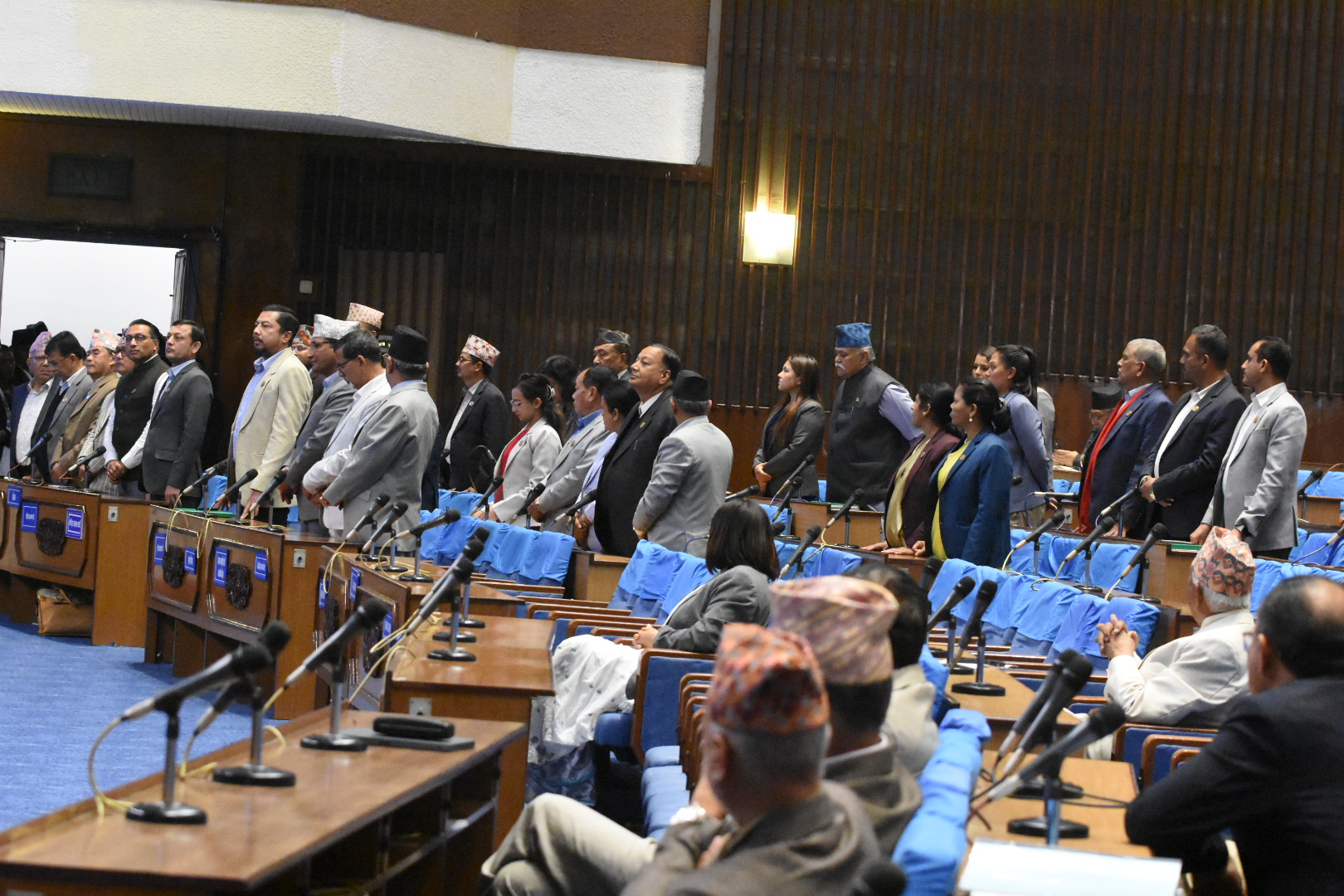
What were the concerns raised by the Ministry of Energy regarding Ghising’s performance?
The Ministry of Energy accused Ghising of failing to submit his performance report on time and rated his work performance zero out of 100. Additionally, there were concerns about the energy deal with India, which was seen as potentially increasing energy costs for Nepali citizens.
What was the controversy surrounding the unpaid electricity bills from industrial firms?
The NEA had cut off power to several industrial firms for unpaid bills accumulated during the load-shedding period between 2015 and 2020. The government pressured the NEA to restore power, but the NEA refused, leading to a dispute. The government later directed the NEA not to disconnect power until a committee could study the power usage by the firms.
Was there any dissent within the NEA board regarding government decisions?
Yes, NEA Executive Director Kulman Ghising and two other board members objected to using NEA funds for a committee investigating the unpaid bills. They registered a note of dissent, questioning the legality of the committee and the decision to use NEA funds for such purposes.
What did the Public Account Committee (PAC) discuss regarding the tariff dispute?
A debate over the electricity tariff took place in the PAC, where CPN-UML and Maoist Centre lawmakers disagreed on the NEA’s billing practices. The committee reviewed over 100,000 papers from the NEA, which included data from the Time of Day (TOD) meters, invoicing details, and specifics on the electricity bills issued to industries.
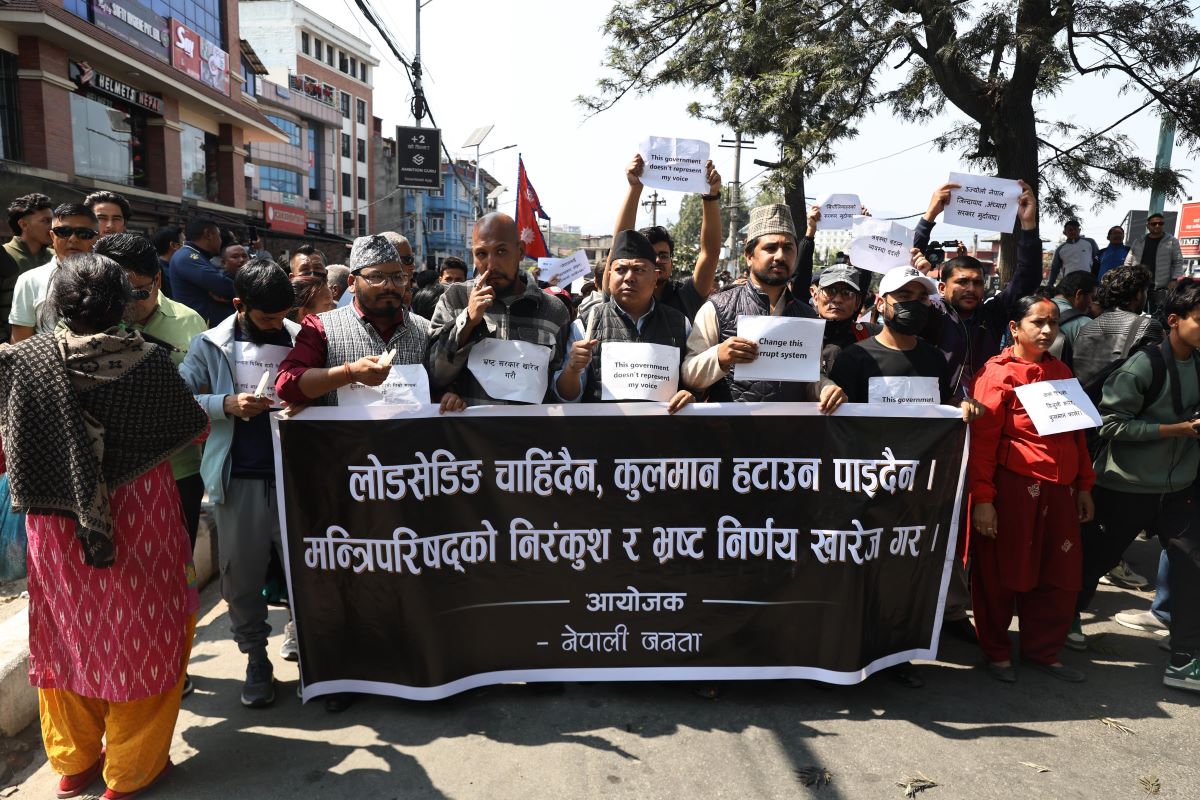
How did the government handle the controversy around Ghising’s dismissal?
While the government took the decision to remove Ghising, the Ministry of Information and Communication Technology denied knowledge of the dismissal. However, Energy Ministry Secretary Suresh Acharya confirmed that the Cabinet had already decided to remove Ghising from his post.
Will Kulman Ghising pursue legal action following his dismissal?
Yes, Ghising has expressed his intent to challenge the government’s decision in the Supreme court if the reports of his dismissal are confirmed. He has also indicated that he will publicly clarify his position through a press conference.
What were the circumstances surrounding Ghising’s initial appointment in 2021?
Kulman Ghising was appointed as the NEA chief by the government led by Nepali Congress President Sher Bahadur Deuba in 2021, after the previous appointment of Hitendra Dev Shakya was revoked by the Sher Bahadur Deuba government.
What role did Kulman Ghising play in this dispute, and why is his handling of the dedicated feeders and trunk lines?
Kulman Ghising, the Managing Director of the NEA, has been criticized for his handling of the dispute over the dedicated feeders and trunk lines. His decision to issue back-dated bills and impose premium charges has sparked strong opposition from the industrial community. Many argue that Ghising’s approach, including cutting power to factories without proper documentation and evidence, has escalated tensions unnecessarily. Moreover, his actions have drawn scrutiny for bypassing necessary regulatory processes, which have raised concerns over transparency and fairness.
What is the current issue between the Nepal Electricity Authority (NEA) and industrial factories regarding electricity supply?
The issue revolves around the NEA disconnecting power to several factories due to unpaid dues for the premium charges on electricity supplied through dedicated feeders and trunk lines during the load-shedding period. The NEA had issued back-dated bills to factories, seeking payment for premium rates applied from 2015 onward. The factories have resisted paying these charges, arguing that they had been subject to power shortages and load shedding and were not provided continuous electricity, despite using dedicated lines. This led to disputes, with the NEA cutting power to more factories, escalating the issue and gaining attention from Prime Minister K.P. Sharama Oli and government.
What are dedicated feeders and trunk lines, and why is the issue related to them so contentious?
A dedicated feeder is a separate line that supplies electricity directly from a substation, providing continuous power even during load shedding, while a trunk line delivers electricity from a main transmission line to the industry, often including a transformer on-site. During periods of load shedding, certain critical industries and services used these lines for a more reliable power supply. The controversy stems from the NEA’s demand for premium charges for these lines, even though industries argue that they were still affected by load shedding and that these lines didn’t always provide 24-hour power as claimed.
How did the industrial factories obtain electricity from dedicated feeders and trunk lines during load shedding?
During load shedding, industries lobbied for dedicated electricity supply to avoid the challenges posed by power outages. On October 20, 2013, the NEA allowed industries to purchase electricity through dedicated feeders, akin to the arrangement for government offices and hospitals. However, the NEA imposed additional charges for these services, which were formalized in 2015 when a committee recommended a premium fee. These additional fees were justified by the NEA to compensate for the continuous power supply, despite factories arguing that they still faced significant load shedding.
What were some of the key missteps or misconducts during the tariff imposition process?
The tariff imposition process faced several key missteps and misconducts. One major issue was the NEA’s imposition of premium charges without obtaining the necessary approval from the Electricity Tariff Fixation Commission, the authorized body responsible for setting electricity tariffs. Additionally, the NEA continued to issue bills for electricity that had not been supplied due to the suspension of dedicated feeder services in 2016, leaving factories without power but still demanding payment. Another misconduct involved the NEA’s Board of Directors approving regulations retroactively, applying fees from 2016 despite discrepancies in the timing of the regulations. This created confusion, especially when factories were issued back-dated bills for years in which they had already paid standard electricity rates. The NEA also imposed incorrect tariff rates on industries that did not apply for dedicated lines and did not receive the required 20 hours of continuous power. Furthermore, the NEA failed to provide adequate data from the Time of Day meters, which measure electricity consumption, leaving factories uncertain about their charges. Finally, the NEA bypassed required approval processes for offering discounts on bills, raising concerns about procedural transparency and fairness in its actions.
Why are the industrialists resisting the premium charges imposed by the NEA?
Industrialists argue that the premium charges are unfair, especially because they had to endure load shedding despite using dedicated feeders and trunk lines. They claim that the supply of electricity was not continuous as promised, and many industries have paid standard rates during this period. Additionally, the back-dated bills that have been issued seem unjust, especially when the NEA did not provide proper data from the TOD meters to justify the charges. The lack of transparency in the billing process and the sudden imposition of fees after years of using the system have contributed to their resistance.
How has the NEA handled the situation, and why is there criticism regarding their approach?
The NEA has taken a strong-handed approach to enforce the payment of premium charges, cutting off electricity to several factories for non-payment. Critics argue that this approach has been heavy-handed and lacked proper evidence or documentation to support the back-dated charges. Industrialists contend that the NEA has not provided clear and transparent information about the billing process, especially concerning the data from TOD meters, and has instead chosen to cut power rather than engage in a constructive dialogue. This has raised questions about the fairness of the NEA’s actions and the potential for misuse of power.
What is the Lal Commission report about dedicated and trunk electricity lines?
The Lal Commission report, released by the Ministry of Energy, Water Resources, and Irrigation in the second week of 2024, investigates and resolves disputes concerning Rs 22bn in arrears related to dedicated and trunk electricity lines. The commission, formed in February 2016, examines tariff issues, billing errors, and non-compliance with tariff determination regulations.
Who led the Lal Commission?
The commission was headed by former Supreme Court Judge Girish Chandra Lal. It was established to address the disputes and issues related to electricity tariffs for dedicated and trunk lines used by industries.
What are the main issues identified in the report?
The report highlights several key issues:
What time periods does the report cover?
The report examines three main periods:
What is the recommendation regarding the tariff arrears?
The report recommends that the arrears for the period between January 2016 and April 2018 should be collected, while industries should be exempt from paying tariffs for the first (July-Dec 2015) and third (May 2018-2022) periods.
How should the arrears be collected?
The arrears for the disputed periods should be based on Time of Day (TOD) meters, which measure electricity consumption. The report recommends recalculating disputed fees and ensuring accurate billing in the future.
What actions are being taken by the government?
The government is committed to implementing the report’s recommendations. Minister Deepak Khadka stated that the electricity tariff arrears would be collected within 15 days, and power supply will be restored to industries that clear their outstanding fees. The Nepal Electricity Authority (NEA) will determine the process for fee collection.
What happens to industries with unpaid fees?
Industries with outstanding fees will have their power supply reconnected within 24 hours once they clear their dues. The government has made it clear that disconnecting electricity lines is not a sustainable solution, and it will assist in collecting the dues.
How are the legal proceedings handled for disputed fees?
The commission’s report mentions that 19 out of 59 industries have completed the legal process, while others have approached district courts directly. According to the NEA Act 1984, district courts handle disputes involving NEA.
What are the next steps following the report’s release?
The government, in coordination with the Tariff Determination Commission, will ensure accurate billing moving forward. The NEA will also handle the process of collecting outstanding fees based on the recommendations of the report.
What is the government’s stance on industries’ refusal to pay the tariff?
The report notes that industries had refused to pay premium fees for uninterrupted electricity supply during load-shedding hours, leading to the formation of the commission. The government is now committed to resolving the dispute and collecting the outstanding dues in a transparent and effective manner.
What does the report say about arrears before 2015?
The report stipulates that arrears before 2015 should be collected in accordance with court verdicts, as the disputes during that period have already been addressed legally. These FAQs summarize the key findings and actions stemming from the Lal Commission report regarding electricity tariffs and arrears in Nepal.